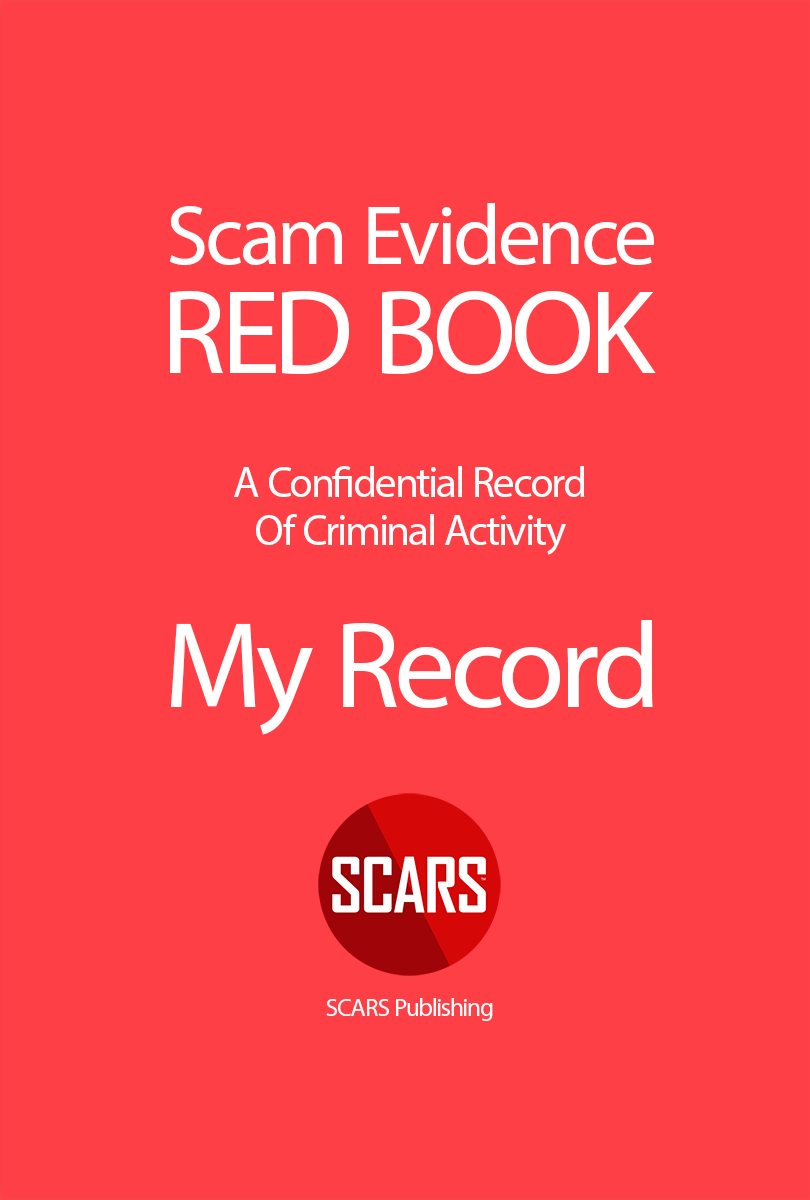Fake Missing Persons Money Scam
An Emotionally Charged Scam that Tugs at Scam Victim’s Heartstrings!
How Scams Work – A SCARS Insight
Author:
• Tim McGuinness, Ph.D., DFin, MCPO, MAnth – Anthropologist, Scientist, Director of the Society of Citizens Against Relationship Scams Inc.
Originally Published: 2021 – Article Updated: 2024
Article Abstract
The missing person scam is a sophisticated fraud tactic that preys on people’s kindness by transforming an innocent plea for help into a financial trap.
Initially, scammers create a fake missing person post designed to evoke empathy and urgency. As the post gains traction through social proof—a cognitive bias where people mimic the actions of others—the scammers edit the content to promote a fraudulent investment or charity scheme, exploiting the established trust.
To guard against this scam, verify information through official channels, scrutinize post edits, educate others, report suspicious posts, and use reputable charities. Understanding social proof can help mitigate the scam’s impact and protect communities from financial exploitation.

The Missing Person Money Scam: Exploiting Scam Victim’s Kindness for Financial Gain
In the ever-evolving landscape of online fraud, a new and sophisticated scam has emerged: the missing person scam. This deceitful tactic preys on people’s kindness and their instinct to help those in need, transforming innocent intentions into a gateway for financial exploitation. Understanding how this scam operates, recognizing its signs, and knowing how to guard against it are essential for protecting oneself and others from falling victim.
How the Missing Person Scam Works
1. Initial Setup with a Fake Missing Person Post: The scam begins with the creation of a fake missing person post. These posts often include a heartfelt plea for help, complete with photos and detailed descriptions that evoke empathy and urgency. These posts are shared widely, accumulating likes and shares, and appearing genuine and urgent.
2. Building Credibility through Social Proof: As the post gains traction, it benefits from a psychological cognitive bias known as “social proof.” This is the tendency for people to mirror the actions of others under the assumption that those actions are reflective of the correct behavior. The more likes and shares the post receives, the more credible it appears to new viewers.
3. Content Edit to a Fraudulent Scheme: Once the post has garnered significant attention and credibility, the scammer edits the content. The heartfelt plea for finding a missing person is replaced with an investment scheme or a fraudulent charity appeal. By this stage, the post has already been widely shared, giving the new fraudulent message an air of legitimacy.
4. Exploitation and Financial Gain: The edited post now encourages people to invest in a too-good-to-be-true opportunity or to donate to a cause. Trusting the social proof from the original post, unsuspecting individuals are more likely to fall for the scam, transferring money or personal information to the fraudster.
Recognizing the Missing Person Scam
Rapid Changes in Content: One of the most telling signs is a sudden and drastic change in the content of a post that has already gained significant attention. A missing person post that transforms into an investment opportunity or a charity appeal is a red flag.
Inconsistent Details: Look for inconsistencies in the story, such as changes in the names, locations, or other critical details. Scammers often make mistakes when altering the post’s content.
Overly Emotional Appeals: While genuine missing person posts are emotional, scammers may exaggerate this to manipulate emotions. Be cautious of posts that seem overly dramatic or too perfect in their portrayal of distress. They may also use heavy religious references that seem inconsistent for where the person is located.
Lack of Official Sources: Legitimate missing person cases are usually reported by official sources, such as law enforcement agencies or reputable news outlets. They will usually include contact information for law enforcement as well. If a post lacks links to such sources, it could be a scam.
Pressure to Act Quickly: Scammers often create a sense of urgency to prevent critical thinking. Be wary of posts that urge immediate action or donations without providing adequate information or time to verify the claims.
The Impact of Social Proof Cognitive Bias in the Missing Person Scam
The missing person scam leverages a powerful psychological principle (cognitive bias) known as “social proof” to deceive individuals – there are literally hundreds of cognitive biases that work against us all.
Social proof is a cognitive bias where people mimic the actions of others under the assumption that those actions are reflective of correct behavior. In the context of the missing person scam, this bias plays a significant role in enhancing the credibility of the fraudulent posts, making them more likely to be believed and shared. Understanding how social proof operates can help individuals recognize and guard against this and similar scams.
What is Social Proof?
Social proof is the psychological tendency to follow the actions of others, especially in situations where the correct behavior is ambiguous or uncertain. This bias stems from an evolutionary need to conform to group behavior for safety and survival. In modern times, it manifests in various ways, from following crowd behavior to relying on reviews and testimonials.
How Social Proof Enhances the Scam
Initial Credibility: When a missing person post is shared by a large number of people, it gains initial credibility. Viewers are more likely to believe the post is genuine because many others have already interacted with it. The assumption is that if so many people are concerned and sharing the post, it must be legitimate.
Amplified Reach: The more a post is shared, the more it spreads across social networks. Each share acts as a recommendation from one individual to another, amplifying the post’s reach exponentially. As the post circulates widely, its perceived credibility continues to grow.
Increased Trust: People tend to trust information that comes from their social circles. When a friend or family member shares a missing person post, it carries more weight than a post seen in isolation. This trust can lead individuals to engage with the post more deeply and take action, such as sharing it further or donating money once the content is changed.
Reduced Skepticism: Social proof reduces skepticism. Seeing a post with many likes, shares, and comments creates an implicit endorsement. Individuals are less likely to question the authenticity of the post and more likely to accept it at face value.
Psychological Comfort: Following the crowd provides psychological comfort. In uncertain situations, conforming to the behavior of others feels safer and more rational. This comfort can cloud judgment, making it easier for scammers to manipulate emotions and prompt actions like donations or investments.
The Role of Social Proof in the Scam Cycle
Creating a Hook: Scammers craft an emotionally compelling missing-person post is designed to evoke strong reactions. The initial wave of shares and likes creates the hook, leveraging social proof to build a foundation of trust and credibility.
Building Momentum: As the post gains traction, the momentum of social proof continues to build. Each new interaction reinforces the post’s legitimacy, drawing in more unsuspecting individuals who are swayed by the collective behavior of their peers.
The Switch: Once the post has reached a critical mass of shares and likes, the scammer edits the content, replacing the missing person plea with a fraudulent investment opportunity or charity appeal. The existing social proof lends credibility to the new content, making it appear as though the investment or charity has widespread support.
Exploiting Trust: With the post now transformed, scammers exploit the established trust. Individuals who trusted the original post are more likely to trust the new message, making them susceptible to financial exploitation.
Mitigating the Impact of Social Proof
Critical Thinking: Encourage critical thinking and skepticism. Before acting on or sharing a post, take time to verify the information from credible sources. Look for official confirmations from law enforcement or reputable news outlets.
Awareness and Education: Spread awareness about the social proof bias and how scammers exploit it. Educating people on this psychological principle can help them recognize when they are being influenced by collective behavior.
Check for Consistency: Regularly review the content of widely shared posts. If a post you previously shared or interacted with changes its message, investigate the new content thoroughly.
Report Suspicious Activity: Report posts that seem to have been edited in a suspicious manner. Social media platforms have mechanisms for flagging potentially fraudulent content, which can help protect others from being deceived.
Use Reliable Sources: Rely on well-known and reputable organizations for charitable donations and investments. Avoid acting on appeals that come solely from social media posts, especially those with sudden changes in content.
By understanding and mitigating the impact of social proof, individuals can better protect themselves and their communities from falling victim to the missing person scam and other similar fraudulent schemes. Awareness of this cognitive bias is a crucial step in fostering a more discerning and secure online environment.
How to Guard Against the Missing Person Scam
The key to these scams is that other real people share them.
Verify Before Sharing: Before sharing any missing person post, verify the information through official channels. Check for news reports, police alerts, or statements from the missing person’s family.
Scrutinize Edits and Updates: If a post you’ve shared undergoes significant changes, investigate the new content. Scammers rely on the fact that people don’t revisit old shares to notice these changes.
Educate and Inform Others: Spread awareness about this scam to friends, family, and social media contacts. The more people know about it, the less effective the scam will be.
Report Suspicious Posts: If you suspect a post is part of a scam, report it to the social media platform. Many platforms have mechanisms for flagging and investigating fraudulent content.
Use Reliable Charities: When asked to donate, always use well-known and reputable charitable organizations. Avoid sending money to unfamiliar entities based on social media posts alone. Though admittedly this is not always possible in the case of GoFundMe and similar appeals.
Stay Skeptical: Maintain a healthy level of skepticism about sensational or emotional social media posts. It’s better to be cautious and take time to verify than to act impulsively and fall victim to a scam.
Summary
By understanding the mechanics of the missing person scam, recognizing its signs, and taking proactive measures to verify and report suspicious activities, we can protect ourselves and our communities from this insidious form of fraud. Remember, your vigilance can prevent scammers from exploiting the kindness and generosity that drives so many of us to help others in need.
More How Scams Work:
- How Scams Work (romancescamsnow.com)
- Google Voice Scam – How Scams Work (romancescamsnow.com)
- The Spanish Prisoner Scam – How Scams Work (romancescamsnow.com)
- Business & Personal Gift Card Scams – Don’t Pay For Anything With A Gift Card – How Scams Work! (romancescamsnow.com)
- Police Impersonation Scam Phone Calls – How Scams Work (romancescamsnow.com)
- The Refugee Romance Scam – How Scams Work (romancescamsnow.com)
- Jobs Scams & Employment Scams – How Scams Work (romancescamsnow.com)
-/ 30 /-
What do you think about this?
Please share your thoughts in a comment below!
Article Rating
Table of Contents
- An Emotionally Charged Scam that Tugs at Scam Victim’s Heartstrings!
- Article Abstract
- The Missing Person Money Scam: Exploiting Scam Victim’s Kindness for Financial Gain
- How the Missing Person Scam Works
- Recognizing the Missing Person Scam
- The Impact of Social Proof Cognitive Bias in the Missing Person Scam
- How to Guard Against the Missing Person Scam
- Summary
- More How Scams Work:
RATE THIS ARTICLE?
LEAVE A COMMENT?
Recent Comments
On Other Articles
- Nikolaus on Dating Scammers Paradise: Ivory Coast: “The Ivory Coast romance scam is still going on. It seems that local authorities don’t handle the issue effectively!” Dec 10, 02:17
- on The SCARS Institute Top 50 Celebrity Impersonation Scams – 2025: “Thank you – we will.” Dec 7, 11:41
- on The SCARS Institute Top 50 Celebrity Impersonation Scams – 2025: “You should add Sean Bean to your list of Celebrities. This one is very good, and persistent. He will be…” Dec 2, 12:07
- on How You Think & Talk About Your Scam Affects Your Recovery: “I have hung on to the scams for far too long. With the intervention of an all-merciful God, I have…” Nov 6, 22:13
- on Disengaging From A Fake Scam Relationship: “Taci, you may want to join our new support community at www.SCARScommunity.org” Nov 6, 03:01
- on Disengaging From A Fake Scam Relationship: “This particular article helped me discover the many things I did wrong the first time I was scammed. I should…” Nov 5, 22:49
- on About the SCARS RomanceScamsNOW.com Website – 24 Years Published: “It was unavailable for a few days, but it is available again. If he would be interested, he is welcome…” Nov 5, 00:59
- on About the SCARS RomanceScamsNOW.com Website – 24 Years Published: “My husband has been scammed and your classes have been helping him but now he can’t seem to access them.…” Oct 26, 14:57
- on Talia Shepard – Impersonation Victim – Stolen Photos – 2024: “Hi, I’m Patrick from Belgium and I found this site by chance, so I just got to know it, and…” Oct 17, 23:46
- on Talia Shepard – Impersonation Victim – Stolen Photos – 2024: “Hallo ik ben Patrick uit Belgie en het is in verband over PayPal. Ik heb het dit jaar spijtig genoeg…” Oct 17, 23:08
ARTICLE META
Important Information for New Scam Victims
- Please visit www.ScamVictimsSupport.org – a SCARS Website for New Scam Victims & Sextortion Victims
- Enroll in FREE SCARS Scam Survivor’s School now at www.SCARSeducation.org
- Please visit www.ScamPsychology.org – to more fully understand the psychological concepts involved in scams and scam victim recovery
If you are looking for local trauma counselors please visit counseling.AgainstScams.org or join SCARS for our counseling/therapy benefit: membership.AgainstScams.org
If you need to speak with someone now, you can dial 988 or find phone numbers for crisis hotlines all around the world here: www.opencounseling.com/suicide-hotlines
A Note About Labeling!
We often use the term ‘scam victim’ in our articles, but this is a convenience to help those searching for information in search engines like Google. It is just a convenience and has no deeper meaning. If you have come through such an experience, YOU are a Survivor! It was not your fault. You are not alone! Axios!
A Question of Trust
At the SCARS Institute, we invite you to do your own research on the topics we speak about and publish, Our team investigates the subject being discussed, especially when it comes to understanding the scam victims-survivors experience. You can do Google searches but in many cases, you will have to wade through scientific papers and studies. However, remember that biases and perspectives matter and influence the outcome. Regardless, we encourage you to explore these topics as thoroughly as you can for your own awareness.
Statement About Victim Blaming
Some of our articles discuss various aspects of victims. This is both about better understanding victims (the science of victimology) and their behaviors and psychology. This helps us to educate victims/survivors about why these crimes happened and to not blame themselves, better develop recovery programs, and to help victims avoid scams in the future. At times this may sound like blaming the victim, but it does not blame scam victims, we are simply explaining the hows and whys of the experience victims have.
These articles, about the Psychology of Scams or Victim Psychology – meaning that all humans have psychological or cognitive characteristics in common that can either be exploited or work against us – help us all to understand the unique challenges victims face before, during, and after scams, fraud, or cybercrimes. These sometimes talk about some of the vulnerabilities the scammers exploit. Victims rarely have control of them or are even aware of them, until something like a scam happens and then they can learn how their mind works and how to overcome these mechanisms.
Articles like these help victims and others understand these processes and how to help prevent them from being exploited again or to help them recover more easily by understanding their post-scam behaviors. Learn more about the Psychology of Scams at www.ScamPsychology.org
Psychology Disclaimer:
All articles about psychology and the human brain on this website are for information & education only
The information provided in this article is intended for educational and self-help purposes only and should not be construed as a substitute for professional therapy or counseling.
While any self-help techniques outlined herein may be beneficial for scam victims seeking to recover from their experience and move towards recovery, it is important to consult with a qualified mental health professional before initiating any course of action. Each individual’s experience and needs are unique, and what works for one person may not be suitable for another.
Additionally, any approach may not be appropriate for individuals with certain pre-existing mental health conditions or trauma histories. It is advisable to seek guidance from a licensed therapist or counselor who can provide personalized support, guidance, and treatment tailored to your specific needs.
If you are experiencing significant distress or emotional difficulties related to a scam or other traumatic event, please consult your doctor or mental health provider for appropriate care and support.
Also read our SCARS Institute Statement about Professional Care for Scam Victims – click here to go to our ScamsNOW.com website.



![Fake Missing Persons Money Scam - How Scam Work - 2024 Teen Sextortion Scams 2024 About Sextortion Scams - Documentary - A Victim's Story - 2024 [VIDEO] - on SCARS RomanceScamsNOW.com - The Encyclopedia of Scams](https://romancescamsnow.com/wp-content/uploads/2024/06/Teen-Sextortion-Scams-2024.png)
















Thank you for your comment. You may receive an email to follow up. We never share your data with marketers.